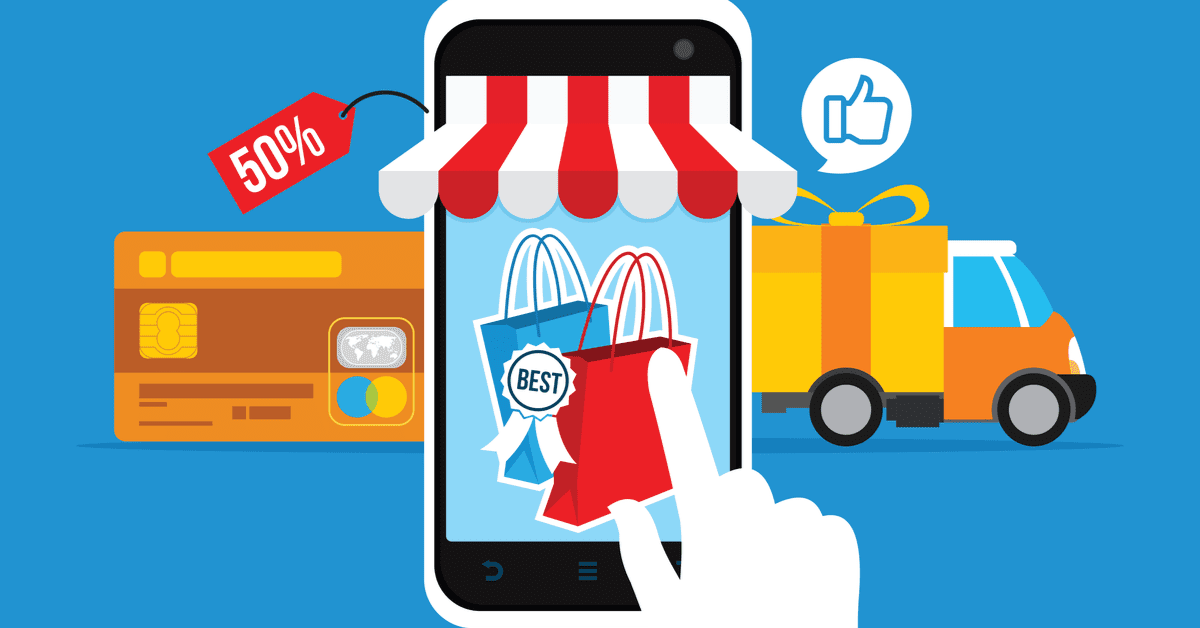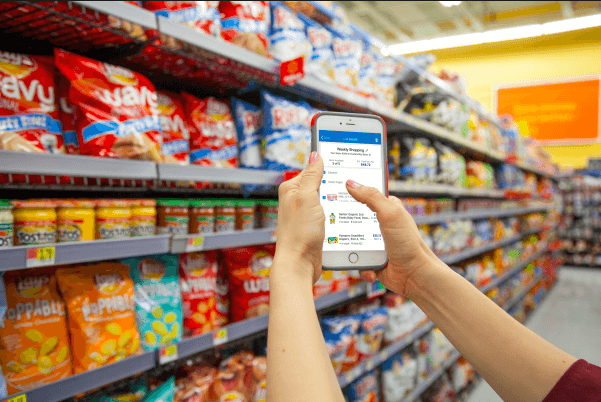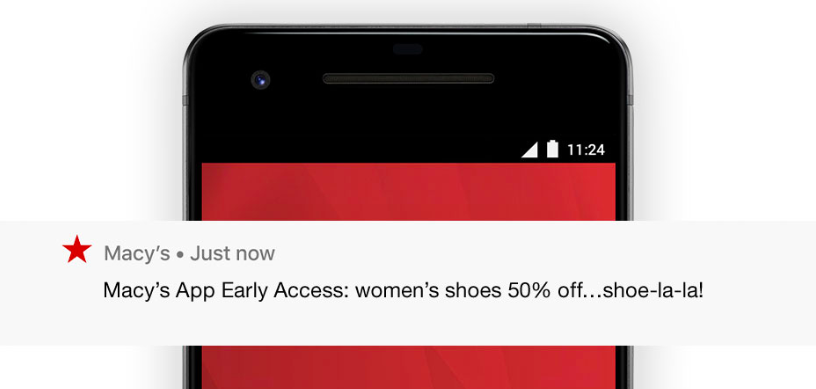5 Successful E-commerce Companies & How They Flourished on Mobile

Reading Time: 7 minutes
E-commerce spending has become a global force.
Since 2007, E-commerce has grown from around $30 billion to just under $100 billion by the fourth quarter of 2017, according to Statista. Those numbers are only going to go higher.
Indeed, some of the world’s most successful businesses are E-commerce sites. How they got there depends on a number of factors, but one thing that’s been proven is that these companies that have embraced mobile technology generally do better.
Mobile is becoming the preferred device for many consumers to do their shopping, even when it comes to historically frenzied shopping days like Black Friday.
Bonus Content
|
According to Bank Rate, the number of consumers who actually visited U.S. stores during 2016’s annual Black Friday event dropped by 23 percent, while 38 percent showed a preference for shopping online.
If mobile usage continues at this pace, 40 percent of all Black Friday holiday shopping will be done on mobile applications.
As a result, many companies that have seen success through e-commerce sales have begun embracing mobile. Let’s take a look at some of the biggest E-commerce business examples who have seen their businesses flourish since adopting the technology.
1. Walmart

E-commerce makes up 2.8 percent of Walmart’s total sales, but Walmart has seen a lot of success by combining customers’ in-store experience with the mobile experience.
Even as Walmart has continued to grow its physical company through acquisitions or launching of new branches, the head office has been working at improving the digital experience.
The new advancements include the company’s pick-up services for customers who prefer to shop online but pick up their purchases from any of Walmart’s brick and mortar retail locations.
In 2017, the company invested in a re-do of its website, focusing on regional “trending” sections for popular items and checkout services that were specific to certain regions or at users’ preferred locations.
The results speak for themselves. The company saw a 40 percent increase in E-commerce sales and a stock boost of more than 10 percent after reporting second-quarter earnings in 2017, according to SailThru.
Much of that mobile success has been thanks to its mobile app. Walmart was a relatively early adopter of the technology. So much so that it was being recognized for its mobile application way back in 2012.
The company continues to make improvements. Walmart recently unveiled its new Store Assistant mobile app, which brought with it a new set of tools to change the Walmart shopping experience.

This mobile technology works in tandem with the in-store experience, allowing users to create ‘smart shopping lists’, or have access to features like the barcode scanner, product search bar, customer reviews, and Walmart Pay.
2. Amazon

Amazon was one of the earliest companies to see the potential for mobile commerce. These days, it’s leading the pack in terms of innovation and mobile sales. It’s one of the best E-commerce apps on the list to date.
Part of that is due to its overall reputation as a trustworthy online retailer. However, beyond that, the company has been working to grow its mobile commerce business so far in advance of its competition that nearly everyone else is now playing catch-up.
These days, around 42 percent of Amazon’s smartphone visits originate from its mobile app. The rest is made up of people visiting the website. Still, app users make up almost 85 percent of the mobile time spent on Amazon, according to Internet Retailer.
As Business Insider points out, the likely reason for this is that Amazon’s mobile app users are likely to be great targets for mobile conversion.
Consumers spent 12.8 billion minutes per month using Amazon’s app, and apps have been shown to have considerably better conversion rates than mobile browsers and desktops, according to Criteo.
The only thing that may be hindering the E-commerce giant from seeing even greater success is, again, according to Business Insider, potential flaws that include a convoluted shipping selection process that is designed to prompt users to sign up for Prime.
Having said that, Amazon has successfully been able to decode most other operations, including supply chain and inventory management along with omnichannel marketing.
3. IKEA
The company launched a free application – IKEA Place – in 2017 that integrated with its latest product catalog catering to brand authenticity, something which all consumers crave for!
Back then, the application allowed users to identify their own unique style through a series of tests, and they were able to create an augmented reality to see how the furniture would look in their homes.
IKEA knew technology is moving rapidly. In an era when E-commerce is ushering innovations like AI, they didn’t want to take the back seat.
It was a fun and interactive way for consumers to use the app and for consumers who liked to plan, it made buying furniture a less scary ordeal. They could make sure the colors matched and that the dimensions were right before even setting foot in a store.
The idea was to make the buying process easier for their customers while encouraging them to engage with IKEA’s catalog throughout the year. While it is difficult to measure how much of an impact the release of the augmented application had on IKEA’s bottom line, there are a number of other factors that are important to consider.

The app was the number-two augmented reality application built using Apple’s ARKit, putting it ahead of many gaming apps, showing that many consumers are at least checking out the application’s features.
We won’t know exactly how successful the app was until IKEA releases more straightforward numbers, but the sheer amount of buzz that the app produced can’t be ignored.
Following the release of Place, IKEA searches spiked according to Google Trends. Not to mention the overall media coverage citing IKEA as one of the most innovative companies.
4. Starbucks

Starbucks probably isn’t what you would think of as a traditional ecommerce business. The company has been trying to make headway in digital retail and unlike other E-commerce companies, actually met with very little success over the years.
In fact, in 2017, the company officially closed its online store, relegating the sale of Starbucks-branded coffee, mugs, and apparel to third-party retail sites. At the time of the closure, the global coffee giant said it would refocus its resources on in-store experiences and – you guessed it – its mobile application.
It likely shouldn’t have come as a surprise that Starbucks would prefer to focus on its mobile technology. The app was originally launched in January 2011, with around 6,800 company-operated U.S. Starbucks accepting mobile payments.
Just three months after it was first launched, the application had more than three million users.
Consumers download the app on their phones and load money onto a mobile card. When they make a purchase the barista scans a barcode on the screen and the price is deducted from the account.
Since its inception, the use of the company’s mobile app has only grown. In the United States, 9 percent of orders were placed in advance as of the third quarter of 2017. Another study showed that at 48 percent adoption, Starbucks has the most regularly used loyalty rewards app amongst major restaurant chains.
Now the company is reportedly testing personalization opportunities to help incentivize customers to make their orders in specific ways.
5. Macy’s

For years, Macy’s has been trying to shake the reputation of a ‘boring old retailer’ in the new digital age. Forbes even dubbed it “the epidemic of boring.”
Macy’s has proven successful at setting itself apart from other legacy retailers by creating a strong E-commerce presence. Back in 2010, Macy’s website was in shambles. Now, it’s a sleek example of E-commerce marketing done right.
More recently, the company introduced a mobile application to help bolster sales. Since then the company has reported better than expected earnings.
Shoppers are increasingly adopting the mobile app, with the company’s CEO saying the retail company expected to see $1 billion mobile sales in 2018 (numbers that are yet to be disclosed).
Macy’s mobile checkout app was designed to speed up the in-store checkout process. The technology leverages the app’s in-store mode to help bolster the self-service feature, allowing customers to browse and scan items they wish to purchase with their phone’s camera and the app’s built-in scanner.
As the internet age has dawned and spread itself into nearly every facet of our lives, traditional retailers have had to adapt.
Now, as mobile becomes the prevailing force, those same companies – and their newer competitors – have had to change in kind.
Through careful rollouts and customer-centric technology, many of these E-commerce companies have been able to take advantage of the mobile revolution.














